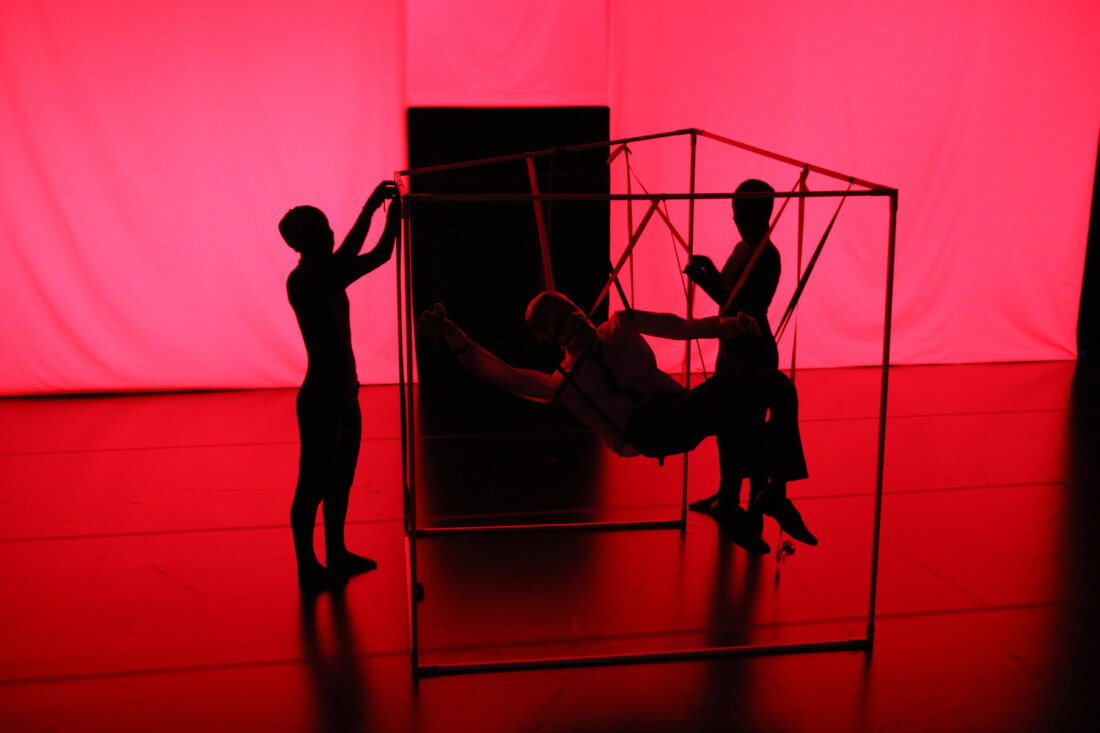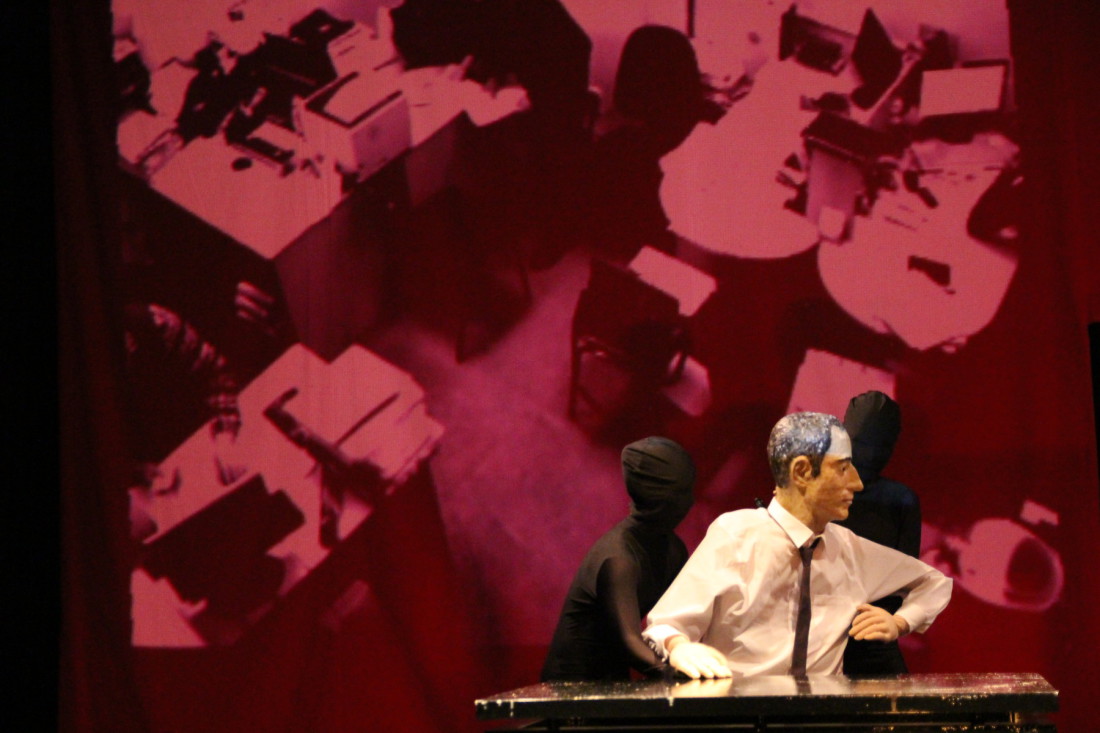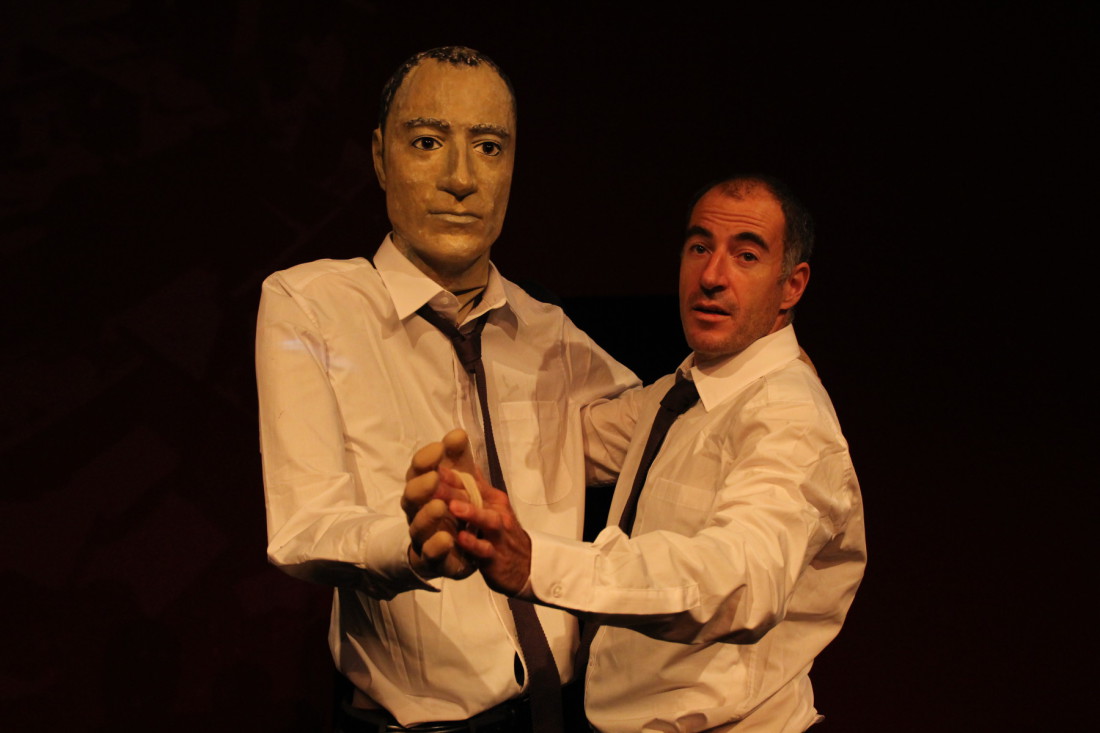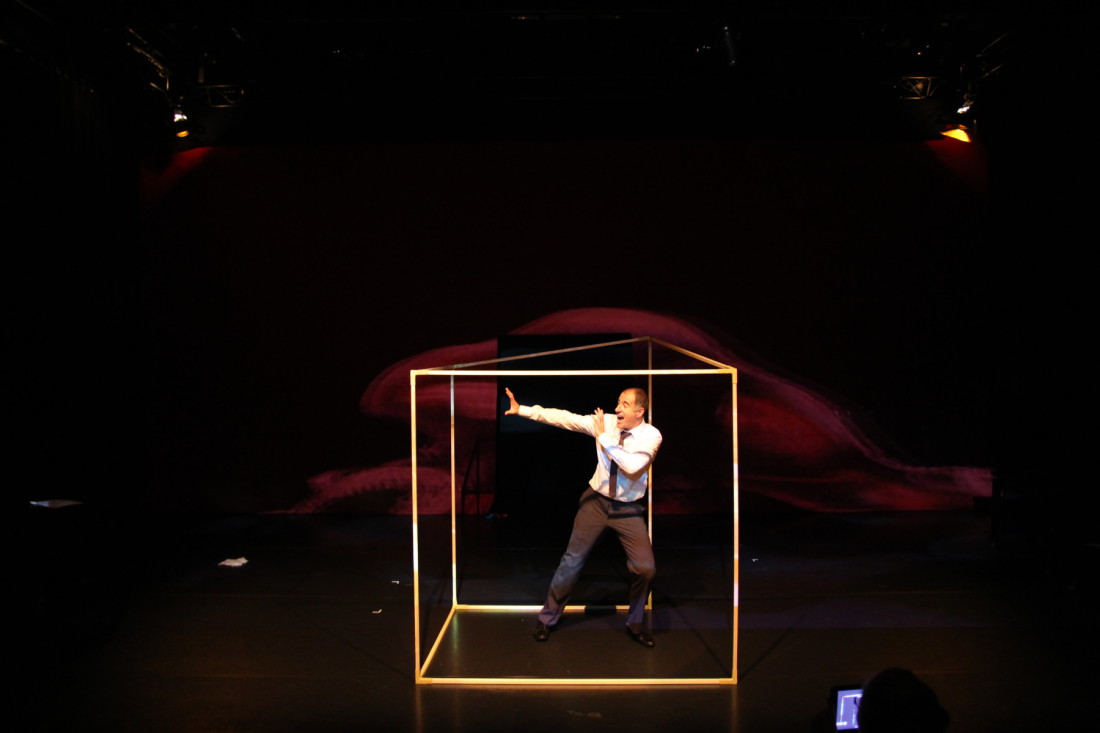Anatomy of Fear
The screaming body
At the age of 7 I was watching a documentary about Shirley Temple. I was looking at her life, from her debut in the film industry in her childhood to her adulthood (when the documentary was released, she was 50 years old). The fact of watching her aging, made me aware of my own death. I started crying on the sofa. I was paralyzed on the sofa and I was crying. My parents came to me and asked what was happening. “Nothing” I said. I could not tell them that I would die, and that I was afraid of it.
Presentation
This project is a “solo” performance combining physical theatre, puppetry and video wherethe actor and theatre director Davide Giovanzana places himself on the stage with a human size puppet (manipulated by two puppeteers) and uses his personal life experience as the catalyst of the show. It consists in exploring how much fear is present in someone’s life and to what degree this “presence” has shaped someone’s personality and on a larger scale how fear influences collective decisions and behavior.
The intention is not to explain fear or to condemn it, but to experience and display this presence. We simply want to acknowledge that this powerful energy is constantly present in us and often it guides us. The simple admittance of this “presence” in us, instead of denying it, is already a step to accept who we are and especially of what are we made of.
Why fear?
There is so much fear nowadays. Our reality is so uncertain that fear penetrates our existence. For instance discussions about immigration, unemployment, global warming and terrorism are completely colonized by fear. This fear is being used and misused by politicians. It is necessary to make a performance exploring the presence and mechanisms of fear – to explore how fear shapes the actions and decisions of people and how one can overcome fear.
.
Note of intention
In this show we express the tension between the “screaming” body and the social body. It is nowadays commonplace to affirm that our identity (and thus body behavior) is the result of external constraints, of the social education and control. However the body is screaming, jerking, trembling, vomiting, suffocating, shaking, all these are emotional expressions that escape any social control. As a person, I have a body, which is the result of external constraints, and at the same time, I am a body, which participates actively in the experience of the world. This project aims to approach the body as a sensitive mass constantly redefining its external and internal limits. It aims to display the cracks under the skin: these moments where the social conventions are erased and the body “speaks” (or screams) for itself.
Opening night: October 2nd 2015, 7pm at Stoa, Helsinki, Finland
other performances:
October 3rd, 5pm at Stoa
October 8th and 9th at 8pm at Stoa
Produced by Teatteri Metamorfoosi
Artistic team:
Davide Giovanzana: performer and director
Salla Sorri: documentary and film designer
Elina Putkinen and Riina Tikkanen: puppet manipulators
Markus Alanen: light designer
Eugenio Caria: sound designer
Aino Koski: set designer
Tanja Eloranta: choreography
Aliisa Hautaviita: costumes
Olaya Ilano Sanchez: neuroscience consultant
Luc Gerardin: producer
Jani-Petteri Olkkonen: consultant
contact person:
Luc Gerardin
+358504920954
Review:
Anatomy of Fear
Actor and director Davide Giovanzana and his doppelganger–a slightly larger than life puppet fashioned in his image–explore mediocrity, shame, and the fear of failure in this dark, lyrical, and sometimes grimly funny piece based on Giovanzana’s own life experience. Operated with a wealth of expression by Elina Sarno and Riina Tikkanen, the Davide puppet is the enemy, the embarrassment, and the responsibility of the man, who alternately attacks, instructs, and comforts it.
I walked out of this piece gnawing on a number of questions about my own experiences with fear. Why is “mediocrity” so frightening? And what does it mean to be a mediocre person? Does understanding a fear response in the brain make it better or worse? If I know that my fear is based on chemicals released in the brain, can I overcome it? Or is it a biologically predetermined conclusion that I cannot combat? Is there such a thing as mind over matter when the matter is all in your mind?
The play offers no concrete answers, and there is a sense that it isn’t so much trying to explain or master fear as it is showing us what it might look like if we could see it. The images are sometimes nightmarish, sometimes grisly, but never more arresting than when they’re understated. There’s a visceral physical understanding to the moment when, after the Davide puppet has pulled snakes from its stomach and tossed them on the floor, the man Davide calmly, almost instinctively, puts them back into his own.
A fear of failure is wide and irrational; it can encompass every action and interaction in life. That’s what makes it so paralyzing, so often silent, and so difficult to dramatize. Teatteri Metamorfoosi has drawn the personal out into the light and mucked around in it for all of us to see.
The last image is a complete surprise, hopeful and weird and so splendidly theatrical, again I can only urge you to go see it for yourself.
-Kate Cuellar
Posted on the Physical Theater Festival (Chicago) blog
June 9th, 2017





